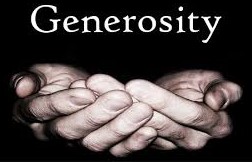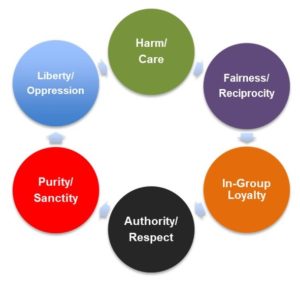I often find myself thinking about my father this time of year. The anniversary of his death is this Friday. I learned a lot of things from my dad, including the importance of getting every last crumb off of a muffin wrapper, the difference between and rate variance and volume variance and the proper use of a wood chisel. But the most important thing I learned from him is generosity. For me, that was his defining virtue. Dad was generous with his time, his wisdom and expertise, his affections and his money. He truly believed in the idea of tikkun olam—repairing the world—and devoted himself tirelessly to many causes. He always had time for us. And if he was sometimes a little too forthcoming with assistance, that’s something I find it easy to forgive. The result of this, of course, was that all of us who were close to him relied on Dad very heavily. I know I did. But I don’t think he would have had it any other way. Because, more than just the family patriarch, Dad viewed himself as a caretaker. He saw taking care of others as not just an obligation, but as a privilege, and a source of great fulfillment. I’ve tried hard to follow this example—I haven’t always succeeded, but I’ve given it my best shot.
People devote a great deal of thought, angst, hand-wringing and naval-gazing to the question of the meaning of life, to the point that libraries are filled with the books on the subject. But what I learned from my dad’s example was that this isn’t a complicated question at all. There is ample purpose to be found in devoting yourself to others. So, stop worrying about yourself, and start thinking about your fellow humans. You can live a small life that’s all about you, or a big life that’s about others.
In addition to striving for generosity in my personal relationships, I’ve also tried to apply this principle to my professional life. Treating colleagues and partners generously is usually good business, and it’s a better way to live. It feels good to share your knowledge, experience, contacts and opportunities. Keeping all that to yourself won’t do much for your reputation, and it’s also a crummy way to behave.
Furthermore, as a qualitative researcher, I’ve found generosity to be an important ingredient for success. One term of art we quallies use frequently is UPR—unconditional positive regard. This principle is closely associated with the thoroughly-fabulous-in-all-respects Naomi Henderson, one of the true pioneers of our profession. The idea behind UPR is that you should assume the best of the people who are participating in your research. They are being generous with their time and thoughts, and you should repay this generosity in kind. Generosity also applies to how I manage conversations during interviews and focus groups. Trust and respect are important ingredients to great conversations. In addition, keeping research participants focused and on a short leash might be time efficient, but it won’t foster an environment of honesty and respect, and it won’t allow space for the unexpected to come up. To do that, it’s important to give people the opportunity ramble a bit, go off on tangents, ask questions and share stories about their cats.
Lest you think that this is all just wooly-headed, feelgood nonsense, it’s important to remember that generosity has been observed in nearly all complex animal species and carries significant evolutionary advantages. It’s not simply kill-or-be-killed out there. While that type of behavior may exist between species, within species organisms tend to cooperate far more than they compete. As psychologists Vladas Griskevicius and Douglas Kenrick have pointed out, all behavior is driven by seven underlying evolutionary imperatives:
-
Evading physical harm
-
Avoiding disease
-
Making friends
-
Attaining status
-
Finding a mate
-
Keeping a mate
-
Caring for family


